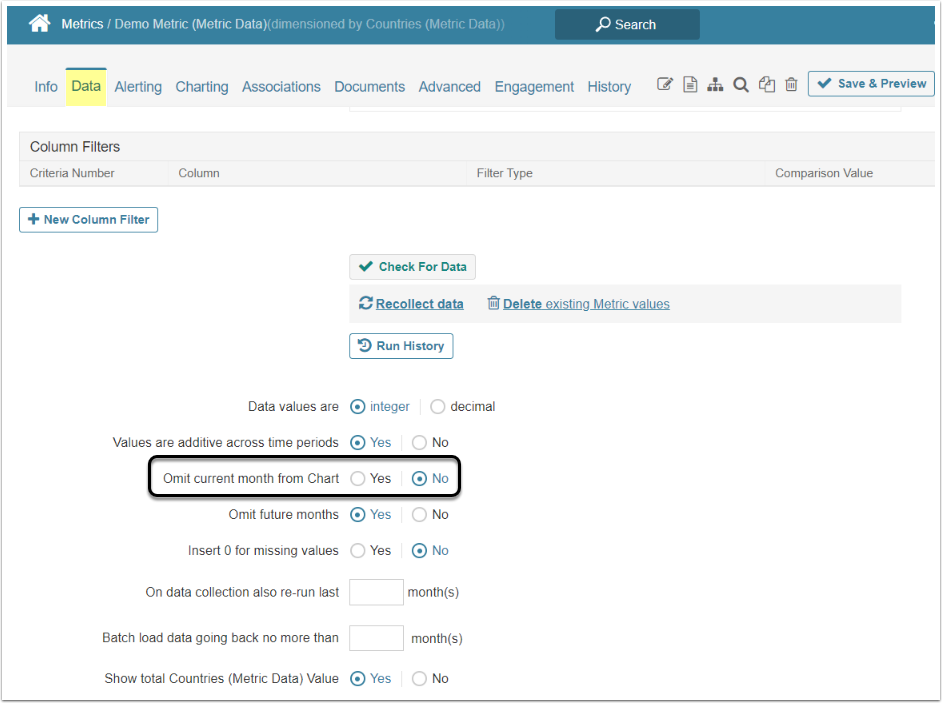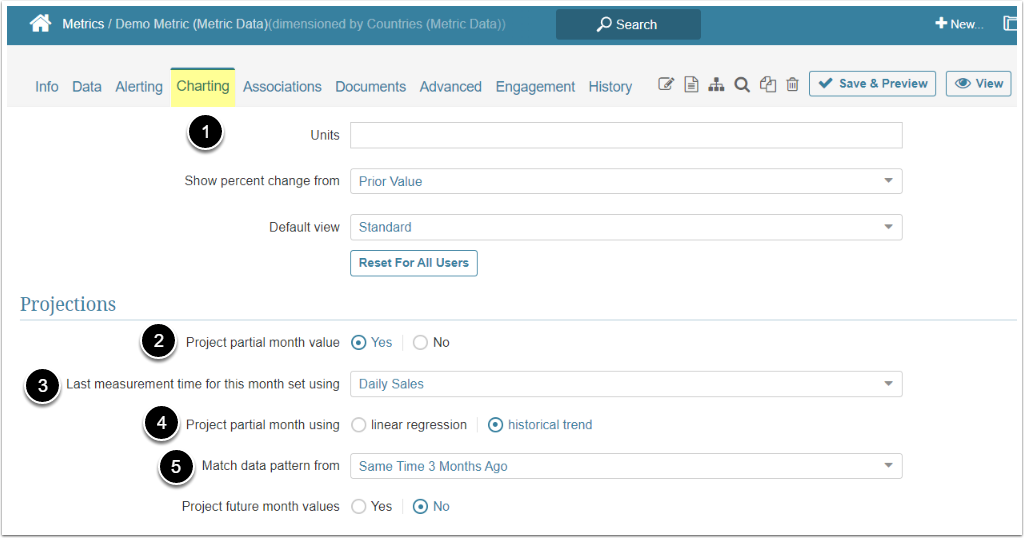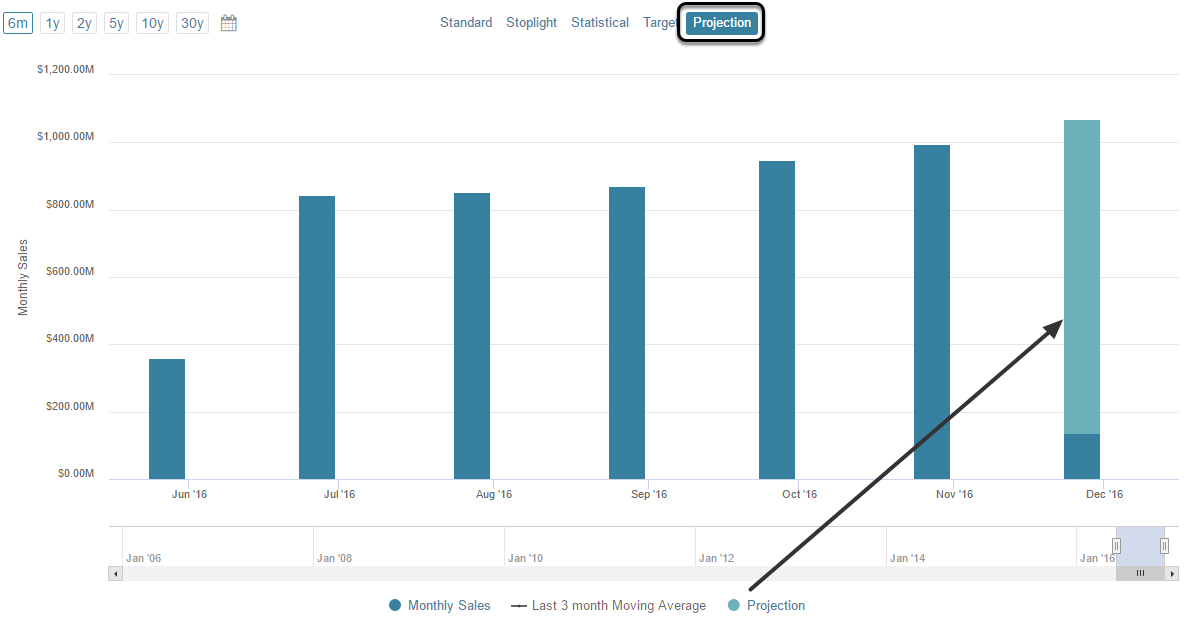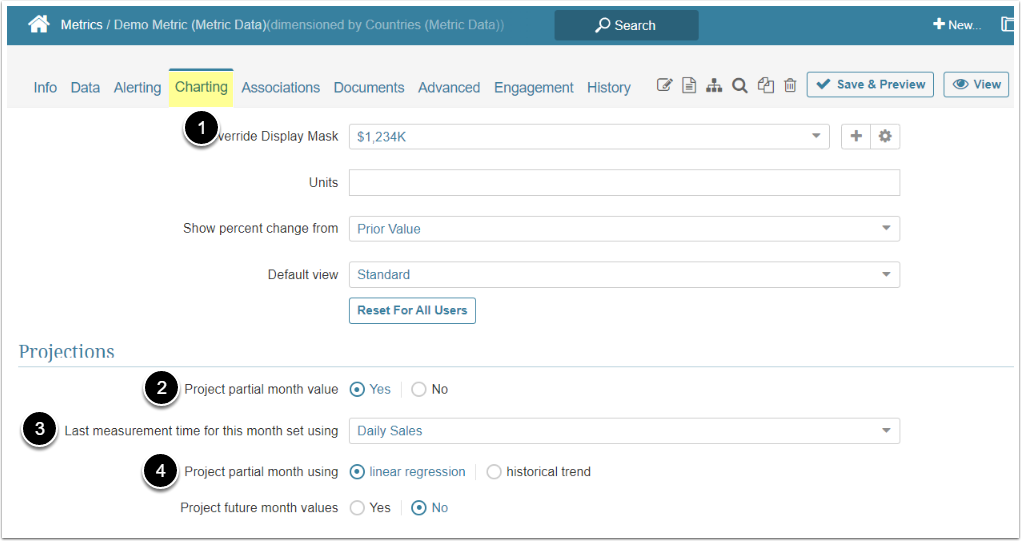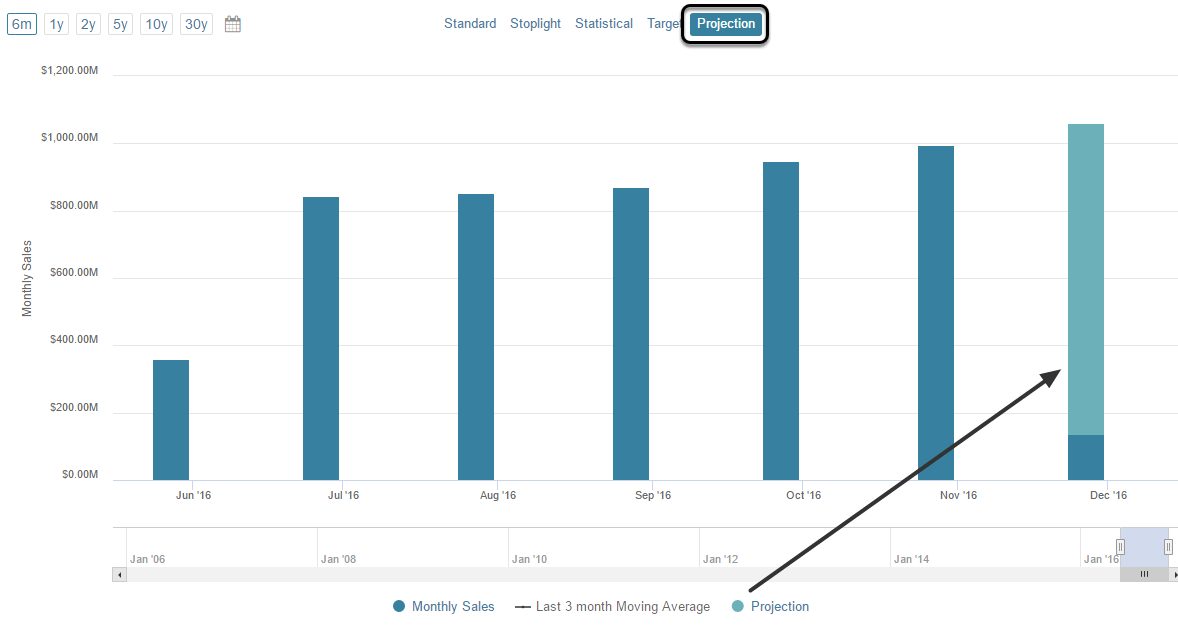This article describes how to create a Partial Period Projection within Metric Insights. Partial Period Projections predict the results for the end of the current period based on both of the following:
- Results collected so far into the period
- Calculation settings that you specify
On the Metric Editor, it is also possible to create Projections for a specified number of future periods. For more details see Create a Future Projection for a Metric.
PREREQUISITES:
A Partial Period Projection will only be possible if:
- The setting Omit current <Measurement Interval> from Chart is set to 'No' to allow data to be collected for less than a full period
- The Metric's Measurement Interval is longer than one Day
1. Open the Metric Editor
Access Content > Elements, find the necessary Metric and click its Active Name Link
Open the Data tab, scroll it down and set the Omit current <Measurement Interval> from Chart to "No".
2. Set Partial Period Projections Using a Historical Trend
NOTE: Unless both of the Prerequisites are met, the setting will default to 'No' and inactive
- Open the Charting tab
- Project partial month value: Select the "Yes" option
- Last measurement time for this month set using: Choose a Metric that will be used to determine the last date in this period that data was collected
-
Project partial month using: The Projections can be based on either:
- Linear Regression: Using the standard statistical calculation; no additional settings required
- Historical Trends: Calculated using the Match data pattern setting
4. Match data pattern from: Choose a comparison period from the dropdown menu
[Save & publish] afterwards.
3. Set Partial Period Projections Using Linear Regression
- Change the Project partial week using to "Linear Regression"
- Open the Charting tab
- Project partial month value: Select the "Yes" option
- Last measurement time for this month set using: Choose a Metric that will be used to determine the last date in this period that data was collected
-
Project partial month using: The Projections can be based on either:
- Linear Regression: Using the standard statistical calculation; no additional settings required
- Historical Trends: Calculated using the Match data pattern setting
[Save & publish] afterwards.
4. Calculation Formulas
There are two supported methods available for computing a Partial Period Projection by deriving it using:
- A basic “Linear Regression": Typically employed when the Metric’s values accrue in a linear fashion through the specified Measurement Interval
- A “Historical Trend” based on a Daily Metric selected for as a reference for analysis
In both of the above methods, the projection uses the ‘Measurement Interval’ to determine the number of days remaining in the period as compared to the total days in the period. The selected reference Metric is used to determine the remaining portion of the period and to set the last measurement time boundary.
For instance, in the selected Metric, the most recent ‘last measurement time’ at which a partial-period data point was obtained on 2012-01-15 07:00:00 is assumed to contain data through end-of-day 2012-01-14. Usually, by default, the selected reference Metric has the same basic settings as the Metric for which the Partial Period Projection is being calculated. This approach is necessary when current data is not available in the source system.
4.1. Linear Regression Projection Formula
The following algorithm is used to compute the Linear Regression for a Partial-Period data point. This formula computes the residual amount that is projected to be accumulated for the metric during the remained for the period.
Formula Components:
- Measurement Value (MV): The partial-period value collected for the metric
- Measurement Days (MD): The number of full days that have elapsed in the ‘Measurement Interval’ up to the date/time that the measurement was taken
- Total Period Days (TPD): The total number of days in the measurement interval period
- Residual Projected Value (RPV) = MV x ((TPD/MD) – 1)
- Projected Value for the Period (PV) = MV + RPV
Example:
A monthly measurement of 100 taken through the 15th day of the month for a Calendar-based Monthly Metric with a 31 day calendar month would have a residual projected amount (RPV) of:
Residual projected value (RPV) = 100 x ((31/15) -1) = 106.667
Projection: 100 + 106.667 - 206.667
4.2. Historical Trend Projection Formula
The Projection calculation is based on the distribution of values for the metric in the reference period. This approach applies when the distribution of values within a period is non-linear. For example, there is a weekly pattern to sales in which certain days of the week generate higher sales.
Formula Components
- Measurement Value (MV): The Partial-Period value collected for the Metric
- Prior Period Total Value (PPMV): The complete period measurement value that was recorded in the reference prior period; e.g., same month last year
- Prior Period To Date Measured Value (PPTDMV): The Partial-Period measurement value that was recorded in the reference prior period the same number of days into the period as the measurement is in the current period
- Residual projected value (RPV) = MV x ((PPMV/PPTDMV) – 1)
- Projected Value for the Period (PV) = MV + RPV
Example:
Measurement value (MV) for monthly sales metric for 12/2011 on 12/15/2011: 100
Reference Metric: Daily Sales Metric
Reference period: 1 year ago
For 12/2010: monthly total sales (PPMV) was: 200
MTD value for daily sales metric on 12/15/2010 (PPTDMV): 90
Measurement Value (MV) : 100
Residual projected value (RPV) = 100 x ((200/90) – 1) = 122.22
Projection: 90 + 122.22 = 202.22
